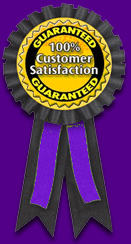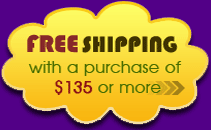LSD | Rohypnol | GHB | Ketamine | Steroids | Tobacco | Alcohol
Drug Information Pages
Any drug that changes the way a person thinks or feels is abusable to some degree. It is easy to see the negative effects of heroin, cocaine and the newer designer drugs like ecstasy, GHB and LSD. However, alcohol, marijuana and prescription drugs all too are damaging in many ways.
Whatever the drug of abuse, all have one thing in common; drugs are toxins. There is an old saying that a drug is a drug is a drug.
When a person uses a drug, something happens in the body. The agents of the drug create a desired effect to a greater or lesser degree. In a person who has a proclivity to addiction, the first time that a mind or mood altering drug is administered to the body, this effect happens to such a degree that the experience can be that mythic "fix" that changes everything. Drugs are used to change the way we feel, to the addicted person they become the solution to problems and have the ability to create a false sense of security and well-being.
Drug Testing Privacy Laws
The 4th Amendment of the U.S. Constitution: "The right of the people to be secure in their persons, houses, papers, and effects, against unreasonable searches and seizures, shall not be violated, and no Warrants shall issue, but upon probable cause, supported by Oath or affirmations, and particularly describing the place to be searched, and the persons or things to be seized."
The 5th Amendment of the U.S. Constitution: "No person shall be held to answer for a capital, or otherwise infamous crime, unless on a presentment or indictment of a Grand Jury, except in cases arising in the land or naval forces, or in the Militia, when in actual service in time of War or public danger; nor shall any person be subject for the same offense to be twice put in jeopardy of life or limb, nor shall be compelled in any criminal case to be a witness against himself, nor be deprived of life, liberty, or property, without due process of law; nor shall private property be taken for public use without just compensation."
Commonly Tested Drugs
Alcohol: Any number of intoxicating beverages, including beer, wine, whiskey, gin, vodka, etc. Primary effect is as a sedative.
Club Drugs: This term refers to an influx of designer drugs including MDMA (Ecstasy), GHB, Rohypnol (Ruffies), Clarity, and Ketamine (Special K). Because most of these drugs are colorless, flavorless, and odorless, they can be added to beverages undetected. All effect the central nervous system and act as stimulant and hallucinogen.
Cocaine: Cocaine is one of the most powerful stimulants found in nature. Cocaine is derived from Coca plant leaves. The leaves are treated with salt and gasoline and allowed to sit. The liquid is later drained and refined into cocaine base. Cocaine base can be smoked but typically is refined into a powder form. Powder cocaine (HCL) is inhaled into the nasal passages or can be dissolved in water and injected into the body via a syringe. Because of cocaine's high melting point, it cannot be smoked. In order to be smoked, it must be altered using the chemical process known as freebasing. Freebasing involves mixes the cocaine with other solvents over a heat source. This process can (and often is) deadly for the abuser.
Depressants/Sedative/Hypnotics: These drugs interact with the central nervous system (brain and spinal cord) to depress cognitive activities. They include sedatives (used to make a person calm or drowsy) and tranquilizers (intended to reduce tension and anxiety). Sometimes called "downers" or "benzos" (short for benzodiazepine) these drugs come in tablet, capsule or liquid form. Some drugs in this category are: Xanax, Valium, Halcion, Librium, Ativan, Klonopin, Seroquel, Zyprexa, Seconal, Phenobarbital, Amytal, and Haldol.
Hashish: Hashish is produced from the THC-rich secretions of the Cannabis plant (marijuana plant). Hashish is the resinous substance taken from the tops of female plants, which contains the highest concentration of THC. "Hash" is usually sold in balls or cakes. Most commonly used by smoking (pipe, bong) or ingesting (eating foods containing hash).
Inhalants: Common inhalants include some types of model cement, cooking sprays, hair spray, deodorant, liquid paper, aerosol sprays, paint, paint thinner, gasoline, and solvents. Inhalants are used by spraying or pouring the substance on a rag and the vapors (fumes) inhaled. This induces a short-lived, light-headed euphoric state in the abuser.
Heroin: Heroin, a semi-synthetic opium, is derived from morphine. Heroin is smoked, inhaled, or injected by the abuser.
LSD: LSD is a synthetic psychotropic, or mind-altering, drug. Due to its extremely high potency, LSD users may be "high" anywhere from 4-14 hours on one dose. LSD is usually sold in the following forms: liquid (small, glass vials); thin squares of gelatin ("hits"), referred to as "windowpane"; small square pieces of paper--commonly referred to as "blotter" acid.
Marijuana: Next to tobacco and alcohol, marijuana is the most popular chemical substance chosen for regular use. Marijuana comes from the Hemp plant and its content of THC found in the leaves and flowering shoots of the plant. Most commonly used by smoking (joint, pipe, bong) or ingestion (eating foods containing marijuana, example-brownies). Marijuana effects the central nervous system and gives the user a false sense of euphoria, relaxation, and increased visual, auditory, and taste perceptions. In actuality, the marijuana diminishes coordination, visual tracking, and loss of energy. Some users experience paranoia, delirium, and hallucinations.
Methamphetamines: Methamphetamines are highly addictive man-made chemical stimulants. The street versions of these compounds are cooked up in clandestine "kitchens" using a variety of hazardous and volatile chemicals. These stimulants can be inhaled, smoked, and injected by the abuser.
Mushrooms: Psilocybin or "magic" mushrooms are found in a variety of environments and, like Peyote, produce similar effects as LSD but not quite to the same degree. The mushrooms are usually ingested but may be dried and smoked.
Narcotics: Though commonly used to refer to all drugs---narcotics are those drugs which are derived from opium (derivatives or synthetics). Commonly encountered narcotics include: Opium, morphine, codeine, heroin, Dilaudid, Demerol, Percodan, methadone, and Darvon.
Opiods: The most powerful prescription painkillers are opioids, which are made to react on the nervous system the same way as opium, morphine (a powerful painkiller that is highly addictive) or heroin. These medications include include oxycodone, hydrocodone, and mepreridine. The common brand names are Oxycontin, Percocet, Roxicet, Roxiprin, Vicodin, Dilaudid, etc.
Opium: Opium is harvest from unripe seed pods of the Poppy plant. Opium can either be injected in its raw form (gum-like) or smoked. PCP (Angel Dust) Phencyclidine, commonly referred to as PCP or Angel Dust, is considered to be the most unpredictable drug on the street because of its effect of the user. PCP can be found in liquid (most toxic), gum, or powdered form. Liquid PCP is often applied to cigarettes as a means of ingestion. In powder form, PCP is commonly mixed with marijuana and smoked. PCP is often masqueraded as LSD or THC. The gum form of PCP may vary in color from a light tan to a dark brown/black.
Prescription Drugs: Prescription drug abuse is a modern-day plague with estimates of up to six million Americans have or currently abuse prescription medications. Many prescription drug addicts legitimize their use because of "doctor's orders". It is not uncommon for these abusers to exhibit drug seeking behaviors--going to several doctors, emergency rooms, and/or clinics reporting lost or stolen prescriptions, increased pain, etc in an effort to obtain their drug. For those addicts in the medical field or with access to prescription medications, stealing medications or self-prescribing medications is not uncommon. Many prescription addicts use multiple pharmacies to hide the amount and frequency of their use. Signs and symptoms of prescription addiction vary due to the different types of medications (hypnotic, sedative, amphetamine, etc). The most commonly abused prescription drugs are pain killers, depressants, stimulants, and antidepressants.







